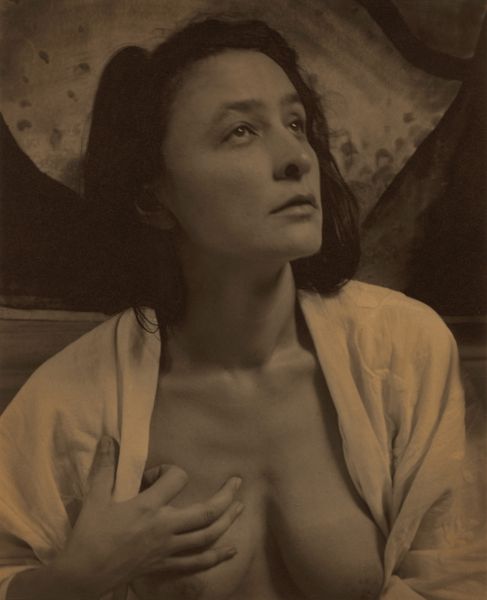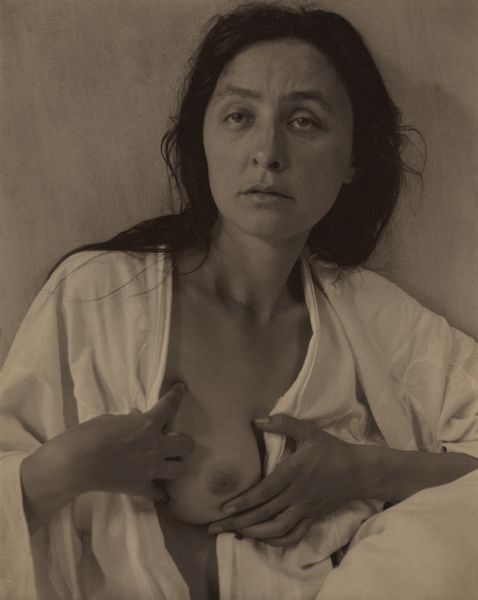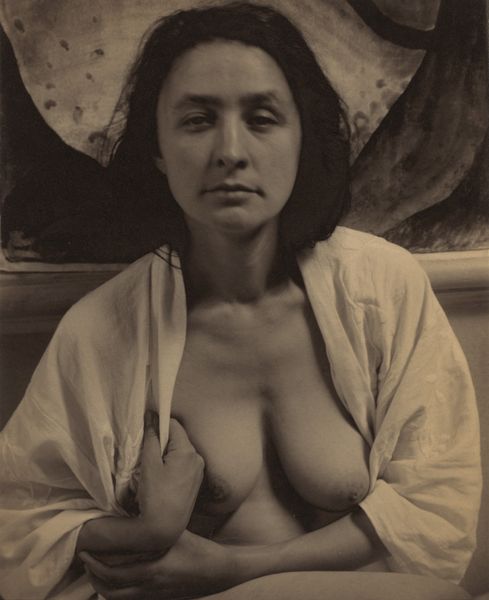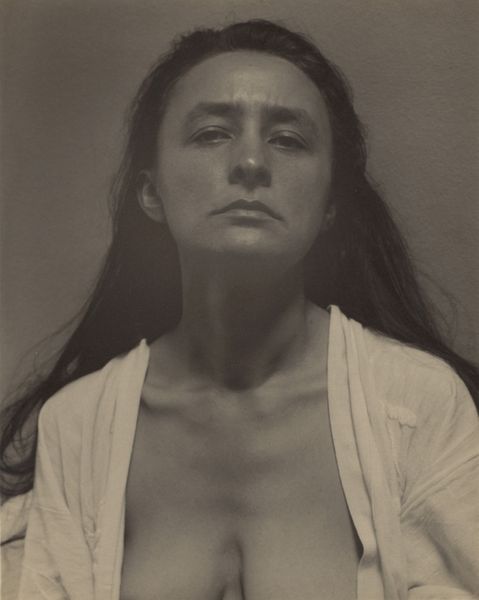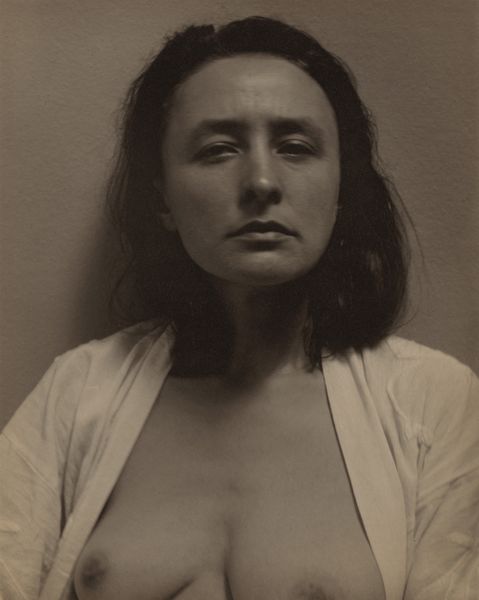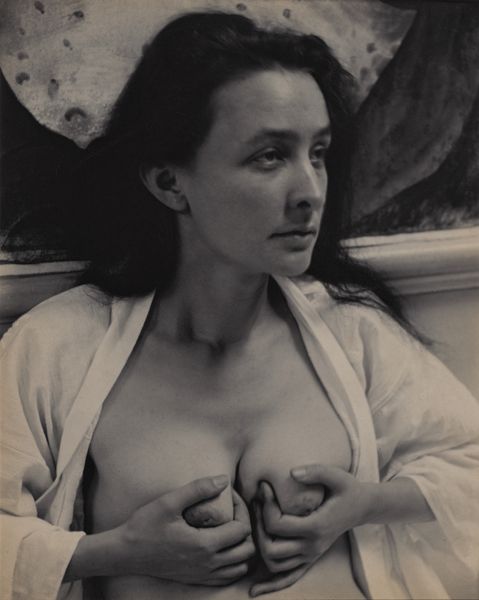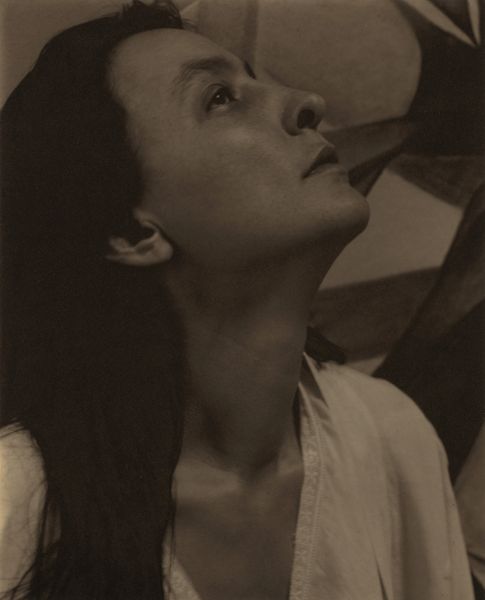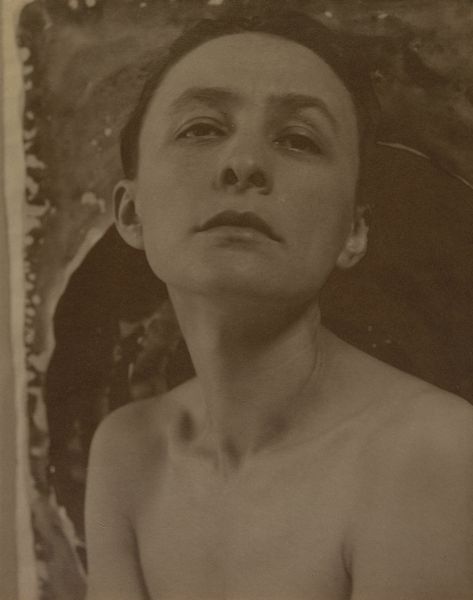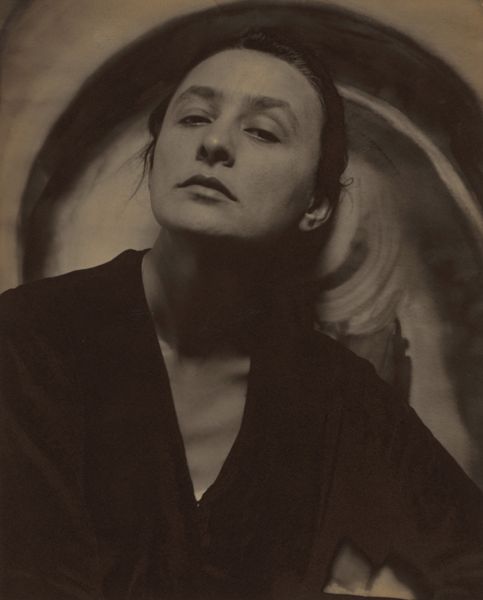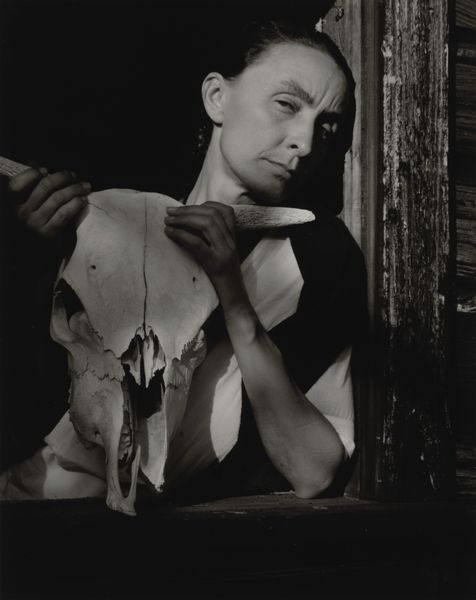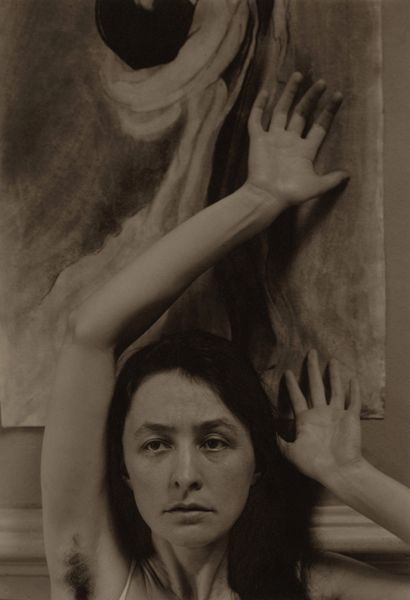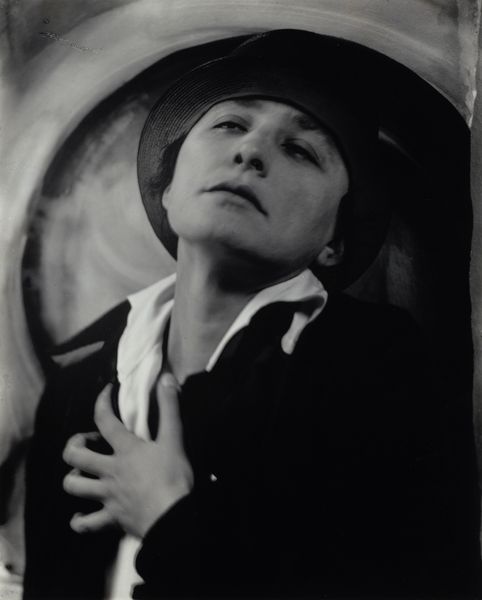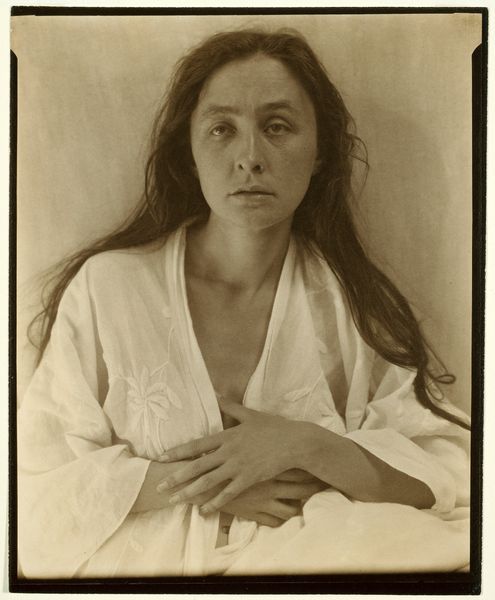
Dimensions: sheet (trimmed to image): 24.4 x 19.7 cm (9 5/8 x 7 3/4 in.) mount: 49.9 x 37.3 cm (19 5/8 x 14 11/16 in.)
Copyright: National Gallery of Art: CC0 1.0
Editor: Here we have Alfred Stieglitz’s photograph, simply titled "Georgia O'Keeffe," potentially captured between 1918 and 1937. It’s a gelatin-silver print, and immediately strikes me as a very intimate, almost vulnerable portrayal. What do you see in this piece? Curator: The "almost" is important here. Considering Stieglitz's role within the New York art scene and his deep ties with O'Keeffe, it’s less about simple intimacy and more about the construction of O’Keeffe’s artistic persona. How do you see the act of portrayal intersecting with issues of gender and the public perception of female artists at the time? Editor: I see how it could be about constructing a persona! Her upward gaze, the slight vulnerability... It does feel like it's playing into something. Do you think Stieglitz was intentionally shaping her public image through these photographs? Curator: Absolutely. Stieglitz's photography, particularly his portraits of O’Keeffe, was instrumental in crafting her image. The artistic and cultural climate valued a romanticized version of the female artist – sensitive, perhaps even a little mystical. The "nude" theme should also be regarded within art politics; during that period such imagery, particularly by male artists portraying women, was the focus of public as well as critical attention, and not immune to social commentary or controversy. Does her own work echo these themes? Editor: I hadn’t considered it in such a deliberate, constructed way before. Thinking about her flower paintings now, and how they were initially received... it all clicks into place a little more. Curator: Precisely! Consider how these portraits fed into a pre-existing narrative about female artists and their work. The politics of imagery are always at play, consciously or not. Editor: This gives me a lot to think about, particularly the relationship between an artist’s personal life and their public persona, and the forces that shape our perceptions. Curator: Indeed. It shows how social, cultural, and institutional frameworks shape both the production and the reception of art. It all adds to a more intricate tapestry of art history.
Comments
No comments
Be the first to comment and join the conversation on the ultimate creative platform.
